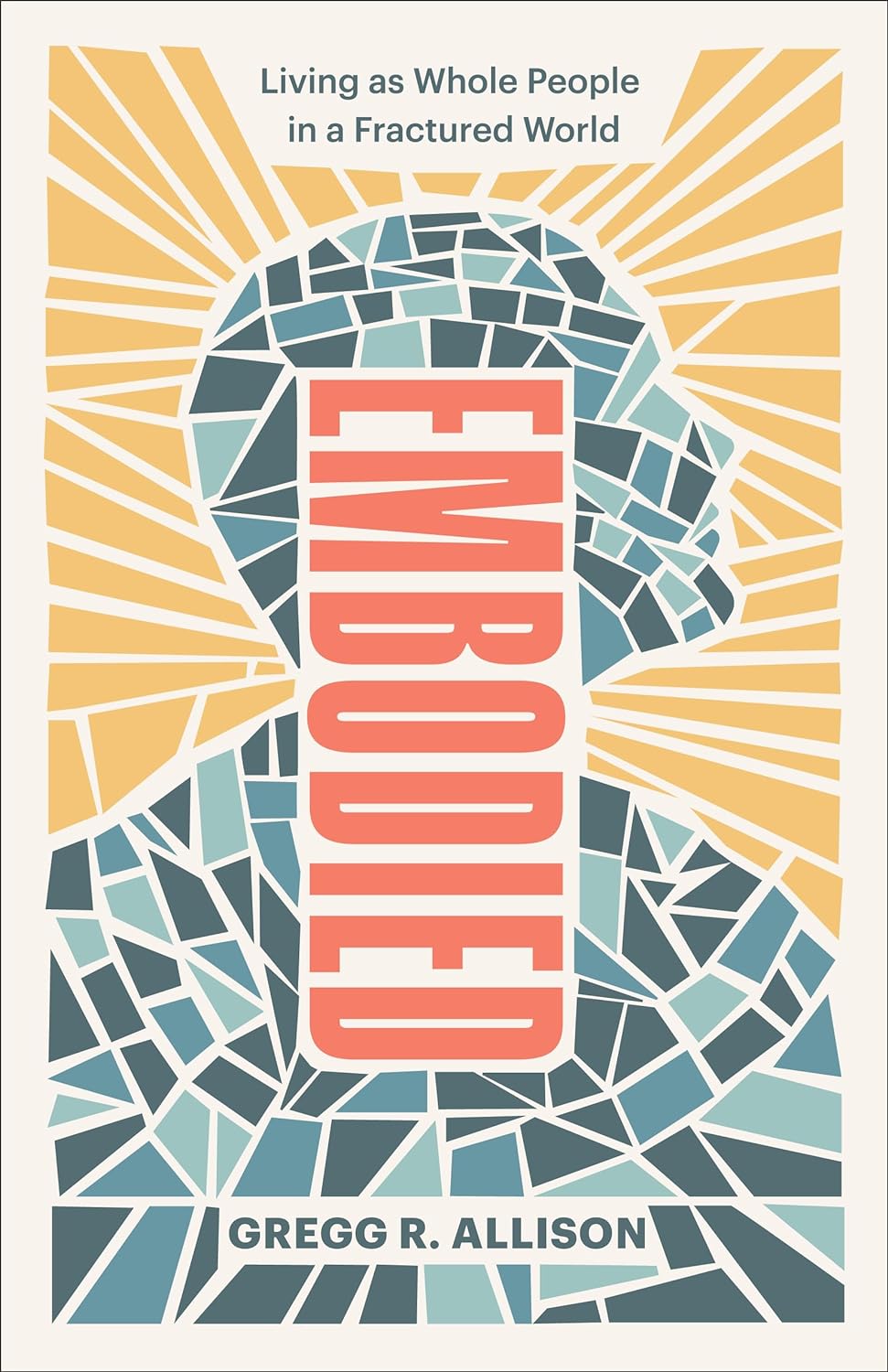Review: Embodied

Why do we have bodies? What does it mean to have a body? How do we live well in our bodies? Gregg Allison explores this important, often underappreciated topic of embodiment. It is not uncommon to hear Christians make significant distinctions between the value of the ‘spiritual’ and the ‘physical’; or between ‘soul’ and ‘body’. Gnostic heresies arise from ignoring our bodies, and the way God has created and designed us to live in them.
Allison provides here a thoughtful exploration of the great breadth of what it means to be embodied creatures. It’s the most broad-reaching and still accessible book that I have read on the subject to date.
Who wrote it
Gregg Allison is professor of Christian theology at The Southern Baptist Theological Seminary.
Why I read it
Embodiment has become an increasing area of interest for me. It began around 10 years ago when I first did some serious study on the ‘image of God’. More recently, as part of my explorations into the intersection of theology and mental health. And so, a book that was all about embodiment sounded like a treat.
What I liked
This was a great read.
Allison begins each chapter by providing a summary of sorts. A statement to consider whether you agree or disagree, the big idea about to be explored, and an application question. I really appreciated these introductory summaries. And I loved that he put thought into not only a clear exploration of theology, but a desire to land it in the practice of life.
I really liked the way that Allison broke up the chapters. The first four on The Created Body, The Gendered Body, The Particular Body and The Social Body were all insightful, thoughtful and there was a lot to be gained. The chapter on gender was especially well written. I also appreciated the extensive use of footnotes. They weren’t overwhelming, but Allison has certainly done his research where it matters.
The final four chapters (The Clothed Body, The Suffering and Healed Body, The Dead Body and The Future Body) were also very good, interesting, and quite succinct.
Overall, it was a very readable book, and well worth my time.
What I didn’t
I really don’t have much to complain about. The middle section of the book wasn’t quite as captivating as the rest. It explores what it means for Jesus to have a body, and the role of the body in our sanctification, discipline and worship. They were all fine chapters. But perhaps the ground being walked was much more familiar than some of the earlier and later chapters.
The only chapter I felt a sense of disappoint at was The Sexual Body. As I’m currently in the midst of a fair amount of reading on this subject, I was eager to see how he unpacked this. I was left disappointed as I felt like it left much unsaid. I’m probably being unfair at this point, as it was only one chapter in a much larger book, and not the key subject. It does a good job of summarising some very complex issues.
Major Takeaway
I took lots of good quotes away from this book. Here’s a couple I enjoyed:
We don’t say that bearing God’s image is a status conferred regardless of gender. Rather, we insist that all men and all women bear the divine image, and they do so as either male or female. There are no such things as agendered image bearers.
Accordingly, people mistakenly speak of the masculine attributes of God and the feminine attributes of God. (We will avoid getting sidetracked by the fact that God is agendered. He can’t be male or female, because gender maps onto embodiment, and God isn’t embodied.)18 Taking it a step further, people mistakenly speak of the masculine and feminine attributes of Jesus. Some examples of his so-called feminine side are Jesus’s washing the disciples’ feet, healing the sick, showing compassion to the Syrophoenician woman, weeping over dead Lazarus, and gently treating children. But servanthood, a healing touch, compassion, lamentation, and gentleness aren’t properties that pertain exclusively to women or to men. Rather, they concern all human beings.19 To repeat: there are no particular capacities and properties that belong exclusively to women or exclusively to men. There are, instead, common human capacities and common human properties that are—indeed, will naturally be—expressed in gendered ways.
Who should read it
Do you have a body? Then you will likely find this book a valuable resource to better understand what it means to inhabit a body as God created and designed you to be.
Embodied
Why do we have bodies? What does it mean to have a body? How do we live well in our bodies? Gregg Allison explores this important, often underappreciated topic of embodiment. It is not uncommon ...
